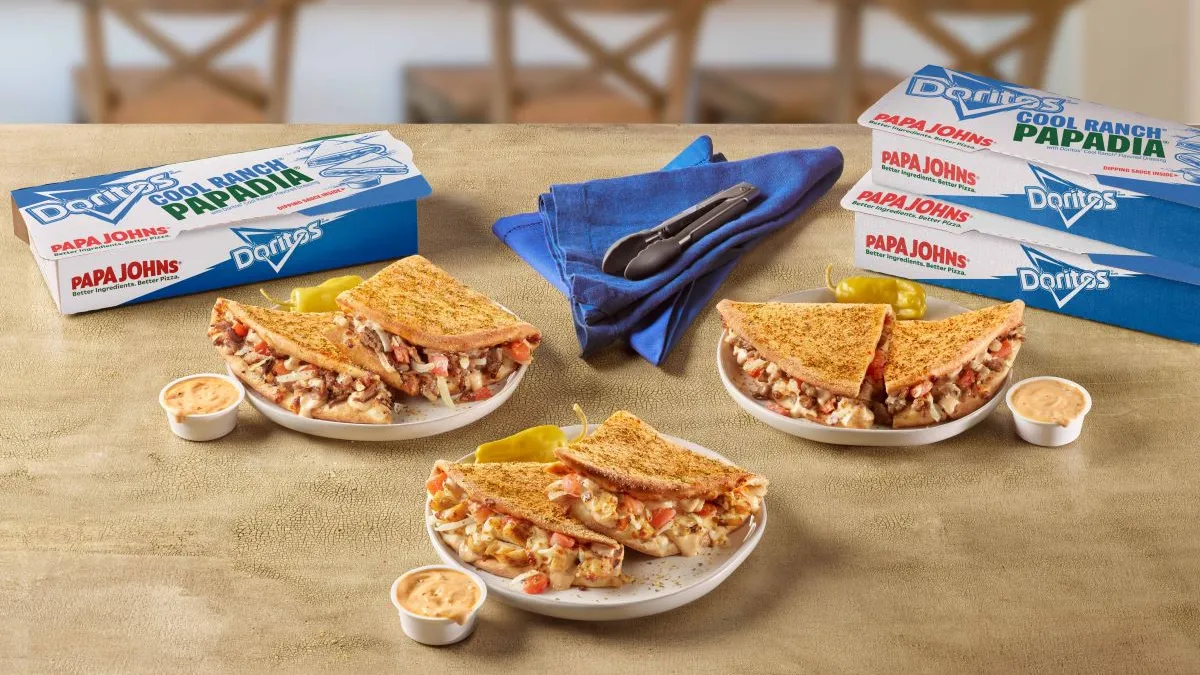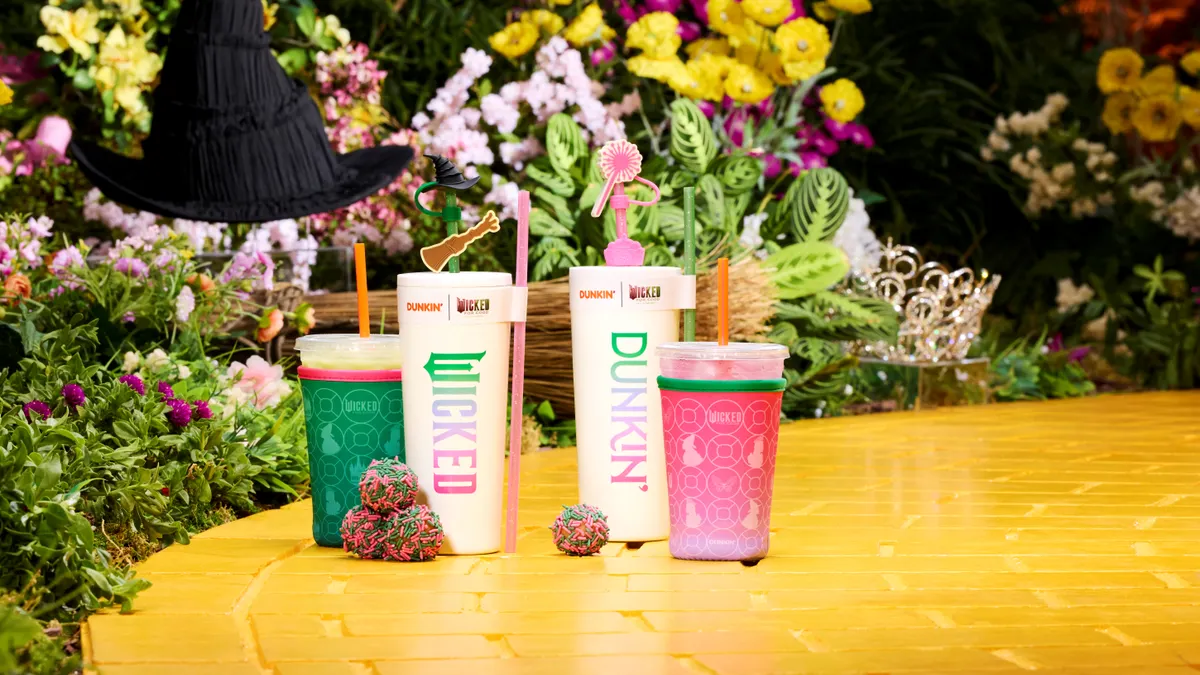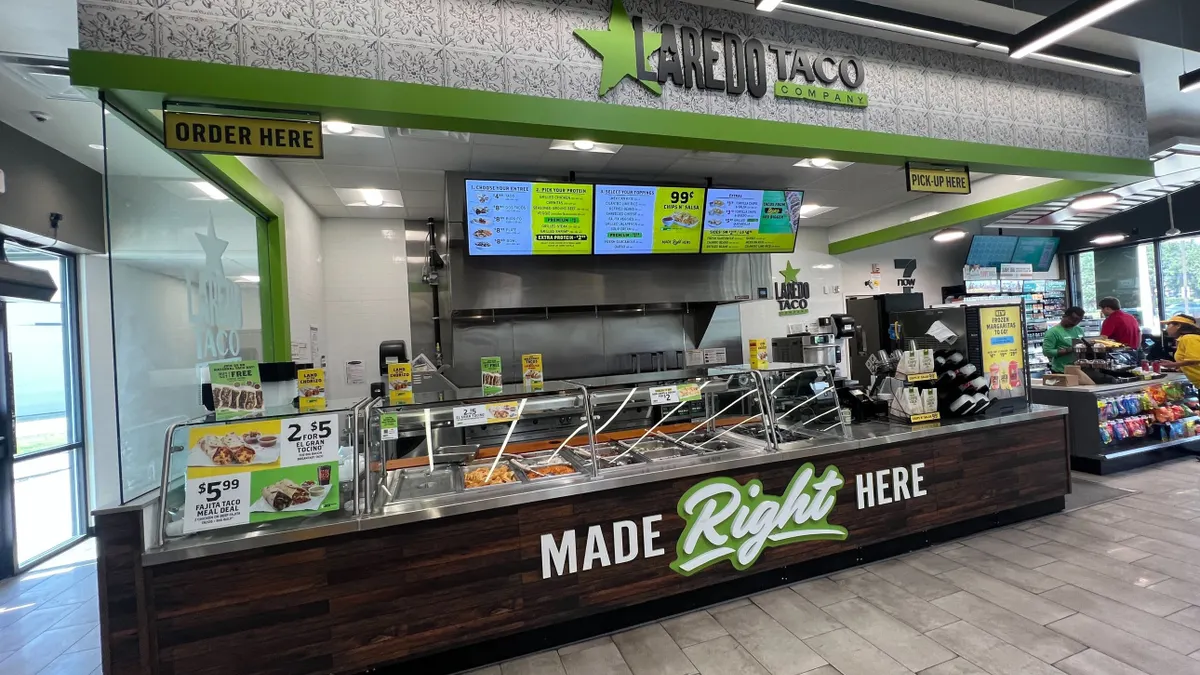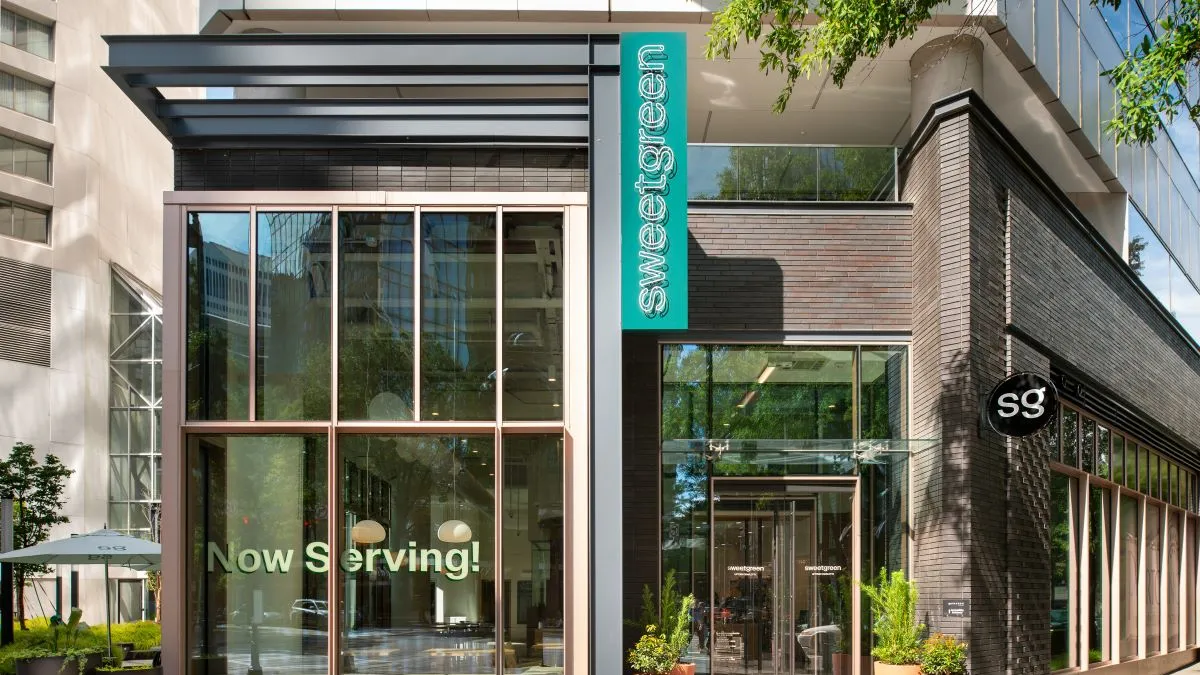For Papa Johns, menu innovation is the “lifeblood” that sets it apart from rival pizza competitors, according to VP of National Calendar and Menu Strategy Kimberly Bean.
The chain has experimented with a wide-ranging slew of food items over the past several years, with activations ranging from pizza-centered products like its thin NY Style Crust pie and Epic Stuffed Crust Pizza, to snackable items and co-branded LTOs.
On May 1, the company will launch the Doritos Cool Ranch Papadia, the latest iteration of its Papadia concept, a sandwich made of folded pizza dough filled with cheese and toppings that diners can eat with a dipping sauce. Papa Johns debuted the category in 2020, and has rolled out several LTO versions of the product since.
The chain’s partnership with PepsiCo, which owns Doritos, goes far back, including an Oreo-flavored version of its Papa Bites dessert product. Papa Johns has used PepsiCo’s appeal to younger consumers hungry for innovation, a target demographic for the pizza brand alongside its base of value-focused consumers, to grow its reach, Bean said.
“[Doritos and Frito-Lay] have these great influencers and great different media marketing strategies, so we get to use those, but also showcase our equity to our consumer,” Bean said. “It’s just a really great collaboration and we’re looking at, how do we continue these types of partnerships?”
Ensuring new menu items keep current customers happy but also attract new diner demographics, without incurring significant costs or complexity in the kitchen, is a balancing act central to Papa Johns’ menu strategy, Bean said.
“There’s this whole new opportunity around check and occasion to create these smaller, snackable options,” she said.
Restaurant Dive spoke with Bean about its future menu plans, approach to brand collaborations and products that resonate with young consumers.
This interview has been edited for clarity and brevity.
RESTAURANT DIVE: How do you approach menu innovation with outside brands like Frito-Lay?
KIMBERLY BEAN: Papadia innovation really started in 2020. We realized we had this opportunity in handheld products and also to create some new occasions and enhance checks. So we came up with the Papadia, which is based off of an Italian street food which is a flatbread sandwich called a piadina. So it started with us thinking about “what are those roots? How do we get back to our roots but create innovation?” We have several different varieties of Papadias from barbecue chicken to Philly cheesesteak, which is extremely popular, and we have a create-your-own option. We thought about additional things we can do and that’s what led to the Parmesan-crusted Papadia, which created a new flavor experience and textures. And we ended last year with the pepperoni-crusted Papadia.
We’ve ingrained this product into our culture, it’s become a fan favorite and a platform that we can now innovate against.
We have a great partnership with Frito-Lay’s parent company PepsiCo and we do a lot of promotions with them throughout the year. They’re great partners for us in thinking through strategy. We saw the ability to innovate in this Papadia category where we had a little more ability to explore, so we took past learnings from them to create the Cool Ranch Papadia. We’re really excited about the flavors we were able to create in this smaller format along with the customers we think we’re going to generate because of the format — slightly younger consumers that like to graze. It really hit that profile from a product perspective, because these consumers are looking for something to snack on and crave.
Are younger consumer habits pushing you to experiment with more snackable items?
You’ll still see a lot of innovation around our premium disruptive pizzas, but there’s this whole new opportunity around check and occasion to create smaller, snackable options. We had the Papa Bites platform that we just launched this past year, and that was a whole new area of opportunity that created these really fun, flavorful menu items that create more exploration and add to the check as well. The expansion of the menu has become really important for us to make sure that we’re growing and creating different occasions for that consumer.
How do you balance the price sensitivity of value-focused consumers with menu development?
For Papa Johns, one of our key drivers is innovation. It’s our lifeblood, it’s who we are and it’s our true differentiator. But there are people who are seeking different occasions that aren’t everyday value, and there are people looking for value — it’s almost a bifurcation of the customer. One of the things we’ve been able to do is create the Papa Pairings Menu, which has a price point that creates what I call everyday consistency so diners know that’s always going to be there for them but we can create innovation at that price point. We’re using it kind of as a promotional outlet to get the news out there and then helping new items become a part of the core menu so people know where to go to find those items.
A lot of Papa Johns’ recent menu additions have used existing ingredients, like the Papa Bowls. Is that an important part of managing costs for consumers?
It’s being really mindful about “how do you expand the menu, how do you expand to different occasions or additional consumers without overcomplicating it?” We did a lot of research before we rolled out the Papa Bowls and saw that customers still want all the flavors, they just maybe want to have a different option on how they consume it. We’re thinking about how we’re taking innovation to the next level, but also how do we scale it up? Because we have a set kitchen footprint that we have, a set cooler and cooking vehicle, so it does become harder to innovate and create new menu items. So can we use different packaging, or can we create different ways to format foods so that the menu items are new? It’s new for the consumer but it’s keeping it in the confines of the food costs and operational executions that we already have.
What types of items do you have in the pipeline for this year?
We have at least four to five new products coming out. There will be new innovation in pizza, because we’re a pizza company and that’s what people are coming to us for and we don’t want to lose that. So how do we build on what people already love in our pizzas and continue to expand on that? And where are the opportunities and occasions that we have for expanding the menu, making sure that we understand what the white space is? Where’s the consumer going to go and how are we going to fill those spots?
We’ve seen a lot of success with the Papa Bites and that dessert category, creating incremental occasions and incremental sales. For a lot of our consumers, that’s where they’re looking to have those craveable menu items that make the difference in which restaurant they’re going to go to. So those things that we can provide them aren’t just add ons, but are going to be those craveable game changers. I think you’ll see more menu items as we fill out the Papa Pairings category, continue to optimize some of our chicken categories and snackable occasions like the Papa Bites.
Can you walk me through your LTO strategy?
We’re all about cultivating an environment of fun. We’re trying to get the team to think differently, to challenge, to lead, to innovate. And that leads to a lot of really good ideas. For us, innovation is designed to do two things: increase frequency with your current customer and expand to new customers that you can reach. Any time we do any innovation, it’s not just innovation for the sake of innovation. There’s definitely a consumer mindset that we’re trying to go after and targets we’re trying to hit during those time periods, whether it’s the seasonality or thinking through a lot of those components. It’s asking “what’s the frequency of our current customers and how do we get them to come that one additional time? And what are the right amount of products that we put in to support that?” And then what are those things that are what I like to call the “back by popular demand” items, what are the products that we gain equity in year on year?
What are some of the challenges you’re trying to solve for this year through menu innovation this year?
We’ve all talked about the real issue of where we are from environmental implications that we have in the world right now and costs and everything. We’re very mindful of that when we’re doing our innovation to make sure that we’re thinking about the implications in the field and to labor. All our innovation goes through those lenses to make sure that it’s executable at scale.




















